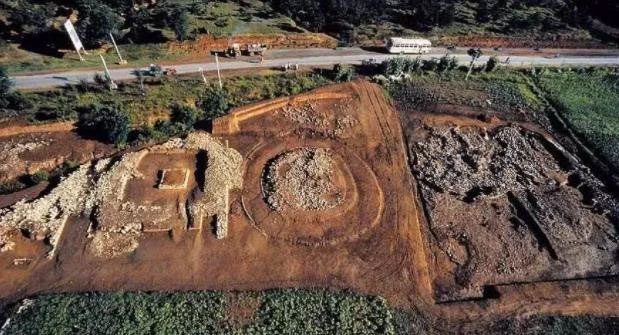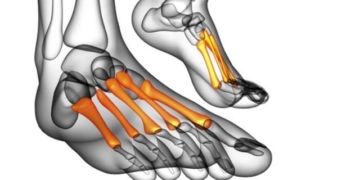Blogger Shishuyadu, who has 13,000 followers on Baijiahao (China), recently published an article comparing the pyramids of China and Egypt.
According to Shishuyadu, both ancient Egypt and ancient China are among the oldest civilizations. The ancient Egyptian civilization is represented by its pyramids, renowned for their pyramids and mummies. In contrast, the ancient Chinese civilization is famous for jade, silk, and porcelain.
Ancient Egypt emerged around 3500 BC, while ancient China originated around 2070 BC. It is evident that ancient Egyptian civilization predates that of ancient China, and the pyramids appear to be more mysterious and famous than jade, silk, and porcelain.

Egyptian Pyramid.
However, many people are unaware that China also has pyramids; in fact, the pyramids built in ancient China predate those in Egypt.
Pyramids in Hongshan Culture
According to Shishuyadu, Chinese pyramids first appeared in the Hongshan Culture. This culture originated from Niuhua Liang in western Liaoning Province and Chifeng in the Inner Mongolia Autonomous Region, approximately 5,000 to 6,000 years ago, representing a treasure of ancient Chinese civilization during the Neolithic period.
Niuhua Liang in Liaoning is the core area of the Hongshan Culture. Here, there is an earth mound resembling a natural hill, but after excavation, archaeologists discovered it to be an artificial structure. This structure has a conical shape, with a diameter of nearly 40 meters and a height of 16 meters, surrounded by more than 30 stone mounds of similar shape. This is the “pyramid” located in western Liaoning, China.
So, what was the purpose of this pyramid? There are several hypotheses: some suggest it was a royal tomb; others believe it served as a temple for sky worship; while some suggest its actual purpose was for copper smelting, as many metal smelting pots were found at the summit.
Approximately 1,500 metal smelting pots were discovered in the pyramid in western Liaoning, with each pot about 33 cm tall and the mouth diameter around 30 cm, similar to the size of buckets we use today. Don’t underestimate the importance of copper smelting; it was a high-tech process at the time and a significant symbol of civilization development.

Chinese Pyramid in Hongshan Culture.
Mysterious Pyramids of Shaanxi
According to Shishuyadu, besides the Hongshan Culture in western Liaoning, there is another place in China where ancient people built pyramids, known as the Five Mausoleums in Xi’an, Shaanxi Province.
The specific location of the Five Mausoleums is north of the city of Hanzhong in Shaanxi Province, where the tombs of five emperors of the Western Han Dynasty are located, hence the name Five Mausoleums. Later, the number of Western Han tombs in the Five Mausoleums increased to nine.
As we know, the pyramids in Egypt are essentially royal tombs built in the shape of the character “Jin” (金). What about the tombs of the Western Han emperors in the Five Mausoleums?
Coincidentally, these tombs are large, majestic, and formidable, and from a distance, they resemble the character “Jin,” allowing them to be compared to the pyramids in Egypt, thus referred to as the Chinese pyramid complex.
Shishuyadu also notes that some believe the pyramids in Xi’an, Shaanxi Province, are not the tombs of the Western Han but rather the “Uyghur Pyramids” constructed in the Qinfeng Mountains, located 100 km south of Xi’an.
There are over 100 “Uyghur Pyramids” of varying sizes, with Turkish inscriptions found on them. Therefore, archaeologists believe these pyramids were built by the Turks.
Moreover, the pyramids here were built about 100 years earlier than the Egyptian pyramids, with the tallest pyramid reaching up to 500 meters, surpassing the height of Egyptian pyramids.
However, archaeological work in this area has not yet yielded conclusive results, and many questions remain unanswered, so the mystery surrounding it has yet to be unveiled.
Chinese Pyramids Are Much Less Famous than Egyptian Pyramids
The largest and most famous pyramid in Egypt is the Great Pyramid of Giza, built for Pharaoh Khufu. Pharaoh Khufu was the second king of the Fourth Dynasty in ancient Egypt. Pharaoh Khufu reigned from 2598 BC to 2566 BC, and the massive pyramid he constructed has a history of over 4,700 years.

Chinese Pyramid is Much Simpler than Egyptian Pyramid.
Blogger Shishuyadu remarks that Egyptian pyramids have “unmatched technical complexity.”
The largest pyramid in Egypt, the Great Pyramid of Giza, was constructed using 2.3 million stones, each weighing an average of 2.5 tons. However, during Pharaoh Khufu’s era, there were no cutting tools available for these massive stones. Not only were there no cutting tools, but there were also no iron tools at that time. Yet these stones were “cut” so precisely by the Egyptians that they fit perfectly with one another, with gaps so small that even the thinnest blade could not penetrate. This is truly unbelievable.
Knowledge of physics, mathematics, and astronomy applied during construction was also advanced for the time. The edges of the Egyptian pyramids are triangular, and the entire pyramid forms a triangular cone. With a triangular structure, the weight is concentrated at the base, decreasing as it rises. This design not only provides stability but also reduces pressure on the pathways and spaces inside the pyramid.
Additionally, the precise value of pi is hidden within the shape of the Great Pyramid of Giza by dividing its base circumference by twice its height, resulting in 3.14159. The inner halls of the Great Pyramid also have a triangular shape, with the lengths of the three sides being in a 3:4:5 ratio, which is a special case of the Pythagorean theorem.
Moreover, the location of the Great Pyramid of Giza is perfect, situated at 29 degrees 58 minutes 51 seconds north latitude, which minimizes the effects of the Earth’s rotation, contributing to its stability for over 4,700 years.
In summary, according to blogger Shishuyadu, the construction technology of ancient Egyptian pyramids is extraordinarily advanced, to the point of being hard to believe, which has contributed to their growing fame.
Conversely, the pyramids in Liaoning and Shaanxi, China, are much simpler, made from a mixture of earth and stone with little technical complexity. Although the pyramids in the Hongshan culture were used for copper smelting—also a high-tech process at that time—they are still quite common and cannot compare to the rich and advanced technical content of ancient Egyptian pyramids.




















































